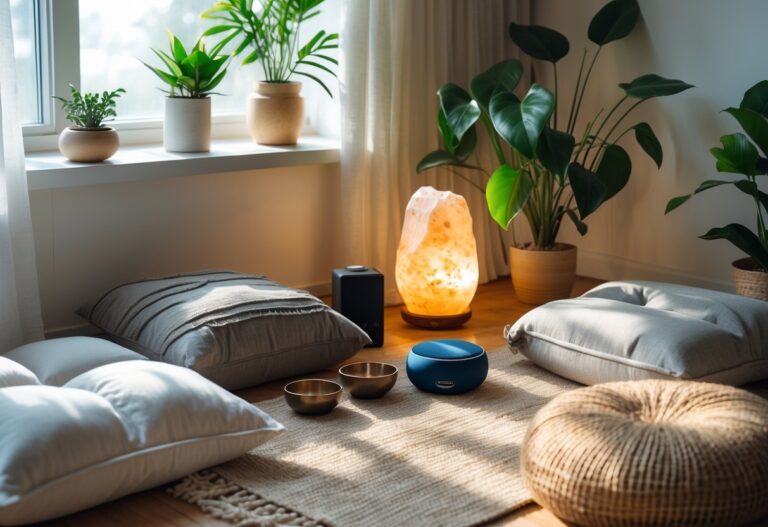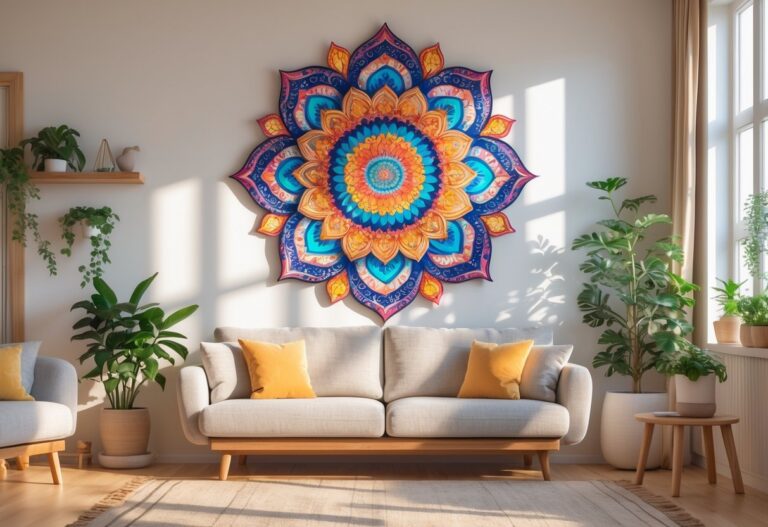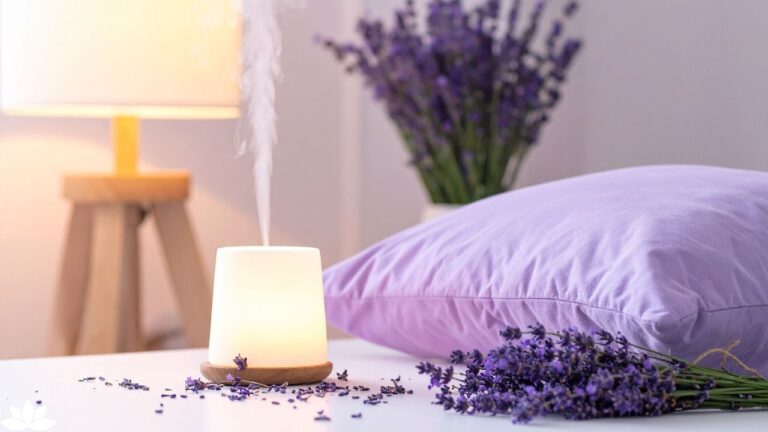When it comes to creating a peaceful home, both minimalism and warm Zen offer unique paths to calm. Minimalism focuses on clearing out clutter and keeping only what is essential, giving you space to breathe and think.
Warm Zen adds softness and natural touches, creating a cozy, balanced environment that feels deeply comforting.
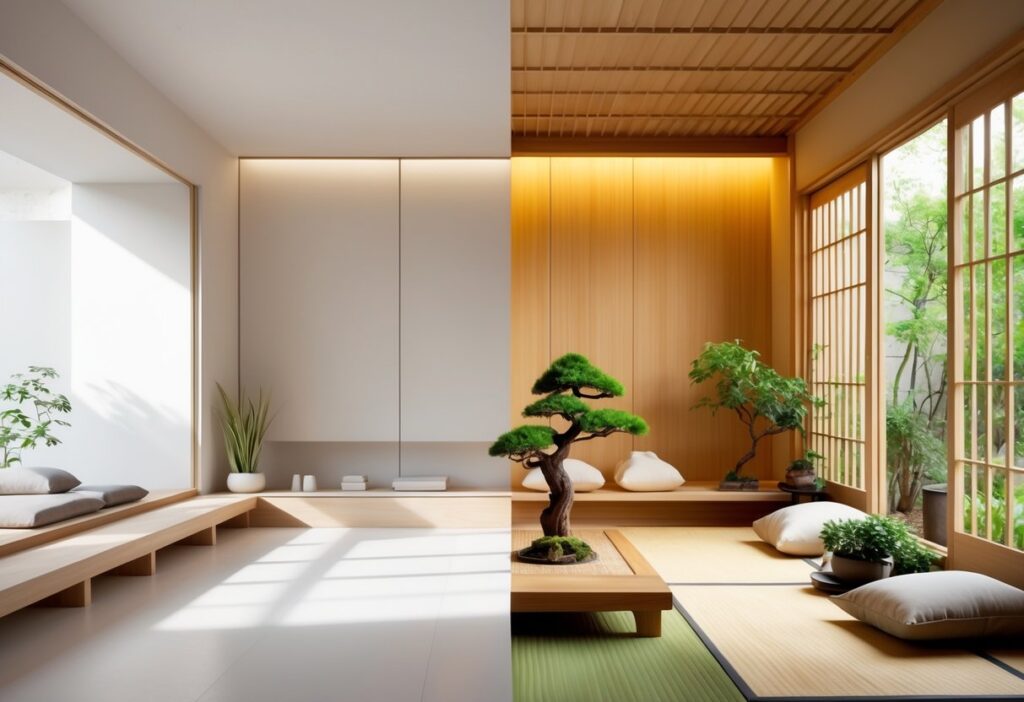
Minimalism is excellent for clarity and order, but it can sometimes feel cold or empty without the comforting details that warm Zen brings.
You can also blend both styles to suit your needs—using minimalism to clear distractions and warm Zen to add the right balance of texture and nature.
Minimalism vs. Warm Zen: Principles and Key Differences
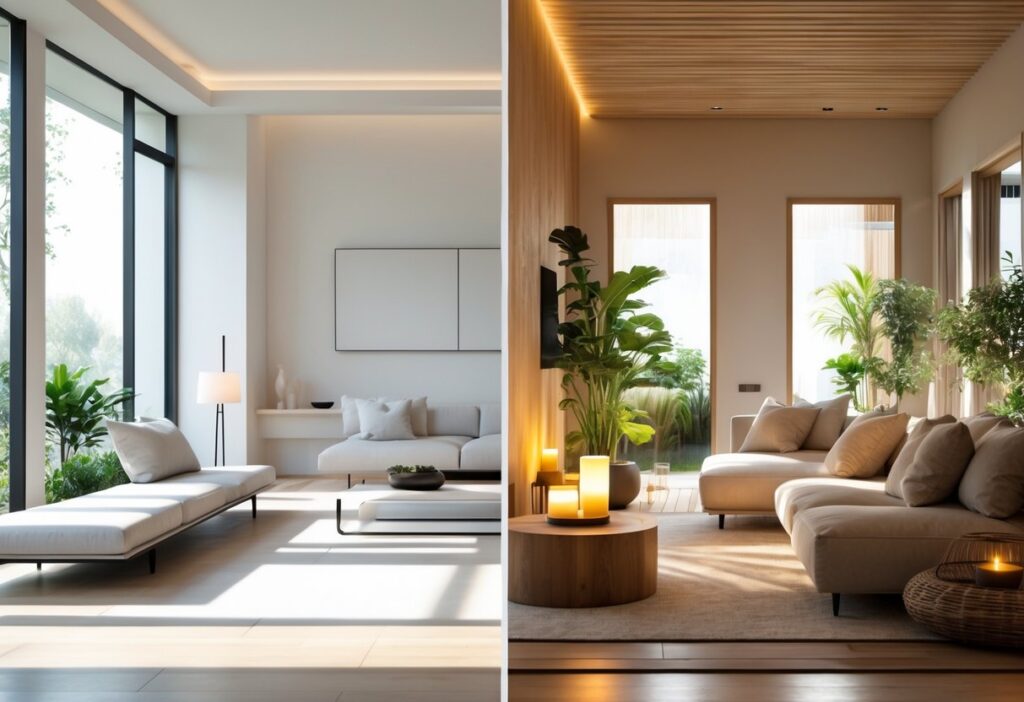
Both Minimalism and Warm Zen focus on simplicity but come from different traditions and use unique methods to bring calm to your space and mind.
They share values like clarity and mindfulness but differ in how they express these ideas through design and daily living.
Core Philosophies and Origins
Minimalism grew from modern art and design movements, emphasizing the idea of “less is more.”
It asks you to remove anything unnecessary, focusing on essentials to create an orderly, distraction-free life. Your environment and possessions are carefully chosen to serve a purpose or bring joy.
Warm Zen, rooted in Zen philosophy from Japan, is about achieving inner peace through mindfulness and connection with nature.
It balances minimalism’s simplicity with warmth and natural elements, encouraging you to be present in every moment. This style draws from spiritual ideas and practical living to create harmony inside and outside your home.
Defining Features of Minimalism
Minimalism in your life means cutting clutter and focusing on function.
Spaces are clean, open, and use neutral colors like white, black, and grey to promote clarity. Furniture and objects are simple, with straight lines and few decorations.
The goal is to create mental and physical space, making daily tasks easier and reducing stress.
You focus on owning less but better quality. Minimalism encourages habits like mindful shopping and regular decluttering to keep your surroundings purposeful.
Distinct Qualities of Warm Zen
Warm Zen keeps the simplicity of minimalism but adds coziness through natural materials like wood, stone, and soft fabrics.
It uses earthy tones—browns, greens, and warm whites—to make spaces feel welcoming and grounded.
Textures and organic shapes in Warm Zen create a sense of calm and connection to the earth.
It encourages you to live mindfully, with objects that reflect nature or have personal meaning. Warm Zen spaces often include plants and natural light to support tranquility and presence.
Minimalism and Zen: Shared Values and Divergences
Both styles seek peace by reducing excess and promoting mindfulness. You’ll find simplicity, clarity, and intentionality at the heart of both.
They invite you to live with purpose, focusing on what truly matters.
However, while minimalism leans toward functional clarity and often feels cool and sparse, Warm Zen embraces spiritual balance and comfort.
It is less about empty space and more about harmonious living through natural warmth and calm. Your choice depends on whether you prioritize strict simplicity or a gentle connection with nature in your peaceful environment.
Cultivating Peace: Space, Mind, and Well-Being
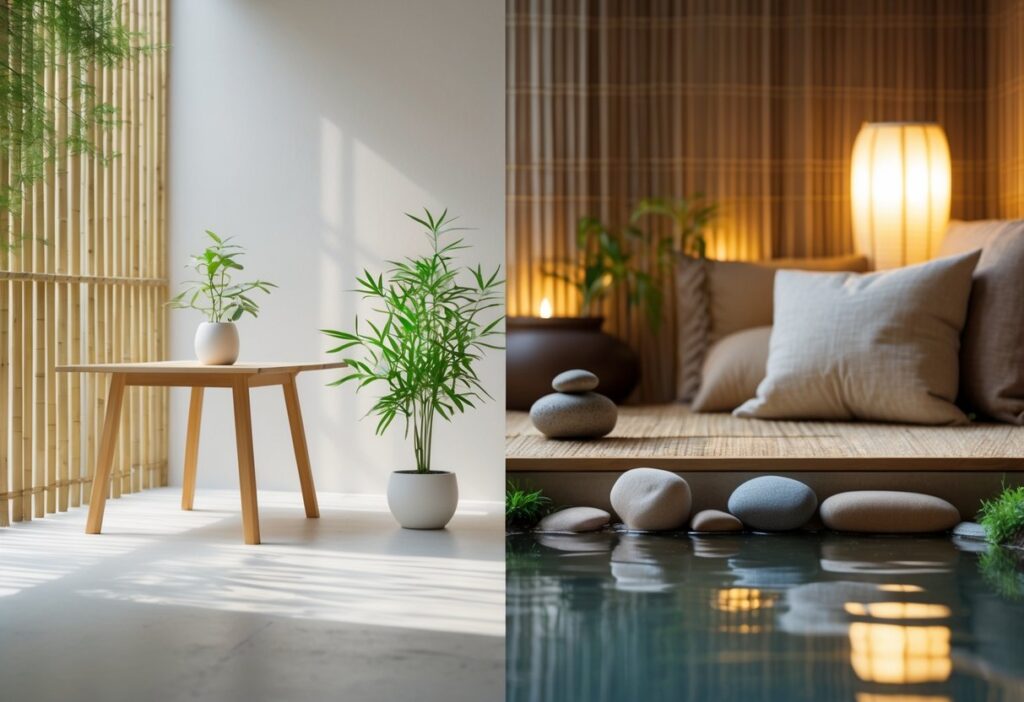
Creating a peaceful environment involves clearing physical clutter and shaping your mindset.
Using natural materials and neutral colors helps build calm spaces. Practicing mindfulness and meditation deepens inner peace and clarity.
Decluttering and Intentional Living
Start by removing items that do not serve a clear purpose or bring joy.
Decluttering is not just about tidying up but about knowing what you truly need and value. This helps you focus on quality over quantity.
Intentional living means making choices with purpose. When you choose objects and habits thoughtfully, your space feels clearer.
Clean lines and open areas reduce distractions. This sets a foundation for peace in your daily life.
Natural Materials and the Serene Environment
Using natural elements like wood, stone, and plants connects you to the outdoors.
These materials bring warmth and texture without overwhelming your senses. A neutral color palette with soft tones—beiges, creams, or grays—creates a calm backdrop.
Choose furnishings that highlight simplicity and natural beauty.
This approach encourages relaxation and well-being. It lets your mind rest instead of constantly processing visual noise.
So, which wins out—minimalism or warm Zen? Honestly, it probably depends on what makes you exhale and feel at home. Maybe they’re not so much rivals as partners in the hunt for a little peace and quiet. Try them both, mix and match, and see what feels right. In the end, your space should feel like a gentle sigh of relief—whatever style gets you there.
Mindfulness, Meditation, and Inner Peace
Practicing mindfulness keeps your attention on the present moment. Meditation can build this skill and help you face stress, sometimes even finding a sense of calm inside you didn’t know was there.
Both practices encourage clarity by dialing down the mental clutter. It’s not magic, but it can feel like it on a good day.
Making mindfulness part of your routine supports a more lasting kind of peace. It gently shifts your focus away from distractions and toward what really matters, whatever that is for you.
With time, this can make a real difference in your well-being and emotional balance.
Honestly, there’s no perfect way to do it—just showing up for yourself is the whole point. Why not give it a try and see where it takes you?

